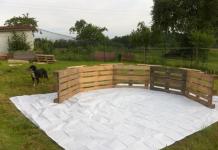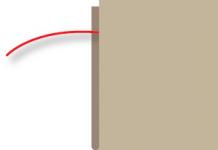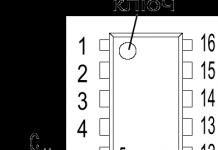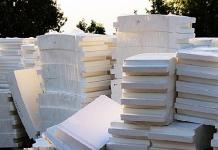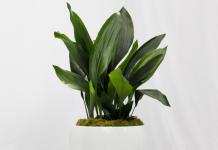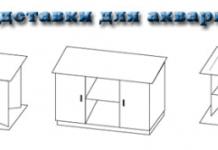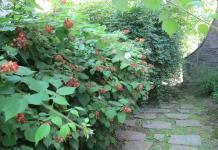Each needlewoman during the creation of the next creation meets with the issue of finishing. How to decorate your product so that it has a unique look? One of the simplest and most beautiful options are brushes. We will be happy to tell you how to make thread tassels. This cute decor can be created from the simplest materials that are always at hand. A variety of color variations gives you a wide field for creativity. They will give a stylistic accent to any product, whether it is a pillow, curtain decoration or even a belt. Tassels can also be decorated with beads, beads, sequins. In this article, you will learn how to easily and quickly make tassels from threads with your own hands.
Required materials and tools:
- needle with a wide eye;
- hard cardboard;
- floss threads (you can also use plain thread or yarn);
- scissors;
- fabric glue.
We analyze the structure of the future product
The brush consists of four simple parts. This is a “tie” (a thread that serves as a fastener), a “head”, a “belt” and a “tail” (fluffy ends of the threads). The structure can be seen in the diagram below.
Determine the size and make a stencil
Consider how long you would like to get. Having decided on the size, you need to cut a piece of cardboard 5” wide and twice the length you need. For example, if you want a finished product that is 4" long, you would need to cut a rectangle that is 5" wide by 8" long. Now fold the cardboard in half and you will have a stencil of the right size.
Making a tie
"Tie", as you remember, is the fastener of the future brush. Cut off a 12" piece of thread. Since we have floss, one piece is enough for us, because they consist of three threads crowded together. If you have a simple thread, we advise you to make several segments of the same length and fold them for strength. Now we lay this piece of thread between the bent ends of the cardboard, as shown in the figure.

Create density and volume
Then everything is simple, we begin to wrap the cardboard stencil with threads, for understanding, pay attention to the figure below. Try to keep the thread under tension so that it fits snugly and does not sag. The thicker and more threads you wind, the more magnificent the finished decoration will turn out. On average, the most optimal number is 80 turns.

Stretch and cut
Now we do the following, we hold the bent side of the cardboard (we make sure that our winding does not bloom and does not jump off the stencil), we take the “tie” at both ends and gently pull it to the free edges of the cardboard. After, we tightly tie them with several knots so as to secure the turns of thread. Then we cut the winding near the fold of the stencil, as shown in the figure, releasing the "tail".

Making a "belt"
So that our brush does not bloom, and the pieces of thread do not spill out of the “tie”, you need to make one more fastening - the “belt”. To do this, take a piece of thread about 24 inches long, fold it in half and thread it through the eye of the needle. Then, at a distance of ¼ ", ½" of the entire length of the brush, we make a loop, as shown in the second figure, as if wrapping around its "tail" and tighten it tightly. We do this several times. Further, for beauty, we make several turns around the girdle so that its width looks symmetrical to the “tail”, as in the third figure. We fix the thread, cut off the rest and drip a small drop of textile glue onto the knot for a fortress.



We fasten the brush
Our brush is ready! Now, using the tendrils of the "tie", you can attach this decoration to your product. It can also be dyed with ribbons, rhinestones to give a richer and more unique look. Turn on your imagination and enjoy creativity. Our master class is over. We wish you creative ideas!
Cut out a square from thick cardboard with a side slightly larger than the diameter of the pompom you need.
Cut a square piece of cardboard down the middle, just below the center point.
Cut a piece of yarn 30 cm long and insert it into the slit so that both ends of the yarn are the same size. (Figure 1)
Start wrapping the yarn around the cardboard, changing its colors as desired. If you are making a pom-pom with a diameter 6,5 cm, wrap the yarn around the cardboard 100 times. If the pom pom is larger, make more turns of yarn, if the pom pom is smaller, then the turns of yarn should be less. Cut off the yarn.
Wrap tightly around the turns of yarn that piece of yarn that hangs from the gap in the cardboard (Fig. 2) and tighten the fabric
After that, the thread turns are cut and with the help of scissors they trim the pompom, giving it the shape of a ball (Fig. 3).


In the future, the pom-pom can be sewn tightly to the product, or, without cutting off the fastening thread, make a pom-pom on a cord.
tassel
Take a piece of thick cardboard and cut a rectangle out of it a little longer than the brush you need, and 10 cm wide, along its narrow side cord, which will hold the brush. Wrap the yarn around the long side of the rectangle. Moreover, the more threads are wound, the more voluminous the brush will be (Fig. 1).
Then tighten the thread along the narrow side of the cardboard.
Cut the wound yarn with scissors at the end opposite the knot.
Cut a piece of yarn 30 cm long. Wrap it tightly around the tassel two or three times below the knot 2.5 cm. Tie securely. Thread the ends of this piece of yarn through the needle and hide inside the tassels. Shake the brush and cut off the uneven ends (Figure 2).



A brush, just like a pompom, can be sewn tightly to the product, or, without cutting off the fastening thread, make a brush on a cord.
The brush can also be decorated with a large bead. To do this, the brush is pulled from the bottom up through a bead of the appropriate size (Fig. 3).
Fringe can decorate almost any product, from a scarf to a handbag or sweater. Turn on your imagination - and the connected thing will be unique.
Cut the yarn into pieces twice as long as the fringe. To make this easier, wrap the yarn around a book or piece of cardboard that is as wide as the length of the fringe. Then cut the yarn on one side. Fold the pieces of yarn in half, thread the folded ends into the edge of the fabric with your fingers or a crochet hook, then pull the free ends of the fringe through the loop formed. Optionally, after you attach the fringe, decorate it with beads and tie in knots.


Even the smallest nail brushes I can find are often too big for me. I know you can order quite small brushes online, but I don't like ordering online and waiting for everything to arrive, it literally pisses me off. I once ordered a sable brush from Sally Hansen's online store, drew one stripe with it and dipped it in acetone to clean it, as I usually do with all brushes, and when I took the brush out of acetone, I found that all the pile was gone - I'm not kidding . Needless to say, I was extremely disappointed. I think another reason why I don't like to order online is that the mail is not delivered directly to the house, but you have to pick up packages from the post office .. but that's another story.
In any case, I'm more inclined to look into the art departments of large stores or specialty art stores that come my way for brushes available. Usually there come across brushes for one or two dollars. So, if you can't find a brush that's small enough for nail art, you can pretty easily make your own. All you need is nail scissors or, which I prefer, cuticle nippers.
Having bought a cheap brush, I simply take my tongs and go around the base of the handle, cutting off small sections of the pile, gradually moving towards the middle of it. I try to keep the cut edge more or less the same width so that when I get to the desired thinness of the brush, the remaining hair will be in the middle of it, and not shifted to the side.


Continue trimming small sections of hair evenly around the entire circumference of the brush until you feel it is thin enough for you.

Below is a photo of some of my brushes, you can see how thin some of them are. You will also notice that among the five photographed brushes, I have two similar brushes with black handles. The only difference is that I cut the pile more thinly on one of the brushes.

In general, when I find a good cheap brush, I usually buy a few of them to make several nail art brushes of different sizes and have spare brushes in case one gets worn out, or I end up ruining it or losing it. .
Thread tassels are a beautiful decoration that is used in various types of decoration. These are knitted hats and scarves, trim or ropes for curtains, piping for blankets or bedspreads. Tassels decorate the locks of bags and wallets, make earrings and beads. The material for manufacturing is also different. These are thin sewing threads, and thick woolen threads for knitting, leather strips and thin twisted ropes. In this article we will look at how to make a brush from threads.
Material for manufacturing
In order to make this decoration, you need to have:
- a spool or skein of thread from which the brush will be wound;
- winding template (made of thick cardboard or you can use a plastic card);
- scissors;
- cotton threads of the same color for tying the bundle;
- awl;
- needle;
- a pot of boiling water or an electric kettle.
Step-by-step instruction
Step #1. You need to take a template, cutting it along the length a little more than necessary for the brush. It should be very dense, not bent, especially if do-it-yourself thread tassels are not made in a single copy. For them to be the same, the template should not be deformed.
Step #2. Next comes the threading process. Here you need to take into account the thickness and splendor of the future product. If you need a thin and flat brush, for example, on a bag, then you need to wind several layers of threads. The more magnificent the brush, the more layers are wound on the template. Moreover, they need to be pulled tight so that the rings do not hang down, but wrap tightly around the cardboard.
Step #3. The most crucial step is the linking of the layers. When the desired thickness is reached, the edge is trimmed with scissors. Either the same thread is taken separately, or a dense cotton thread matched in color (for strength and greater reliability) and, for a start, a knot is tightened that tightens all layers (anywhere, even in the middle of the cardboard).
Step number 4. Then all layers are removed from the template. The diagram shows how to make a brush out of thread with a needle. For sewing, the main thread is taken, from which the decoration was made. It turns out a dense head through which the ends pass.

Step number 5. The formed brush still looks very untidy, all the threads are crumpled and round. The next step is to align them. This can be done in several ways. You can use an iron, a hair straightener. This article describes the steam leveling method.
Step number 6. To do this, boil a pot or kettle to create steam. The brush is put on an awl or a long knitting needle (so as not to burn yourself with hot air) and hold it over the pan for 5 minutes.
Finishing touch
Now you know how to make a thread tassel. But it is also important and difficult to trim the edges evenly so that all the threads are the same length. There is one method that makes this process much easier and more efficient.

It is necessary, after aligning the threads, to take a thick sheet of paper and roll a brush into it. It remains only with sharp scissors to cut the threads along with the paper.
It turned out an even beautiful brush, which remains only to be sewn to the finished product.
The use of such decorations
Nowadays, decorative elements such as tassels are widely used in various products. Fashion designers have long been decorating the interiors of rooms with curtains with the addition of such elements along the bottom or sides of the curtains. Beautiful ropes with huge bright satin threads adorn the curtain holders.
Often tassels are used by craftswomen when knitting things: hats, berets, shawls, blankets, sweaters, etc.

The latest fashion trends are the making of earrings and other jewelry from tassels, made from bright thin ropes or leather. It is great to do this work yourself at home. To do this, you need to buy shiny thin twisted threads.
Before you make a brush out of thread for earrings, you need to make two identical elements and put them on metal rings that are fixed on the purchased ear hooks. They can be bought at any store that sells this kind of goods. Having learned how to make such gizmos, you can make a number of jewelry for any color of the dress. You can make combined multi-colored brushes by adding threads from different skeins.
In modern conditions, making a brush with your own hands is usually carried out using bristles and animal hair. You can make such brushes with your own hands and get a quality tool for painting or painting. Brushes can be made round or flat depending on the area of use. In addition, the pile can be shortened or elongated.
Making a brush with your own hands is not difficultThe most common and high-quality brushes from the tail hair of such animals are considered:
- badger;
- column;
- proteins;
- gerbils.
Given the high cost of the animal hair tools listed above, homemade brushes can replace this material with the hair and hair of other animals. In particular, instruments made of mink, arctic fox and fox wool have become more and more common lately. In addition, waste from the activities of fur factories can be used as a material. Also, the pile can be made from the wool of camels, sheep or long-haired dogs, as well as human hair.
Manufacturing technology
The first step in the manufacture is the preparation of bristles or animal hair. In addition, a stand for brushes and material for the handle must be prepared. However, first of all, you should start with the choice of material for the bristle tuft.
Material selection
When choosing a material, you need to focus on what kind of work you plan to use the brush for. So, for painting with watercolors or oils, some materials are suitable, and for fine painting works, others. At the same time, there are areas of use that require the use of a certain material. For example, for ink painting, most masters prefer to use products made from camel wool.
 Trimming wool for the future pile of brushes
Trimming wool for the future pile of brushes Consider the main characteristics of the most common homemade brushes, depending on the material used:
- Sandstone brushes, as a rule, are made flat with a long or short hairy surface. They are distinguished by soft and elastic hair. Therefore, such tools are mainly used for fine painting work or drawing with oil paints or watercolors. In addition, brushes with sandstone bristles can be used to glaze the lacquer.
- Badger products have a round or flat shape. They are somewhat stiffer than the previous version, and therefore they are mainly used for working with oil paints.
- Brushes with kolinsky pile can be flat and round. They have high elasticity and resilience. They are mainly used for fine work, as well as for raw glazing.
- Squirrel tassels can only be round. They are exceptionally soft and elastic, so they are mainly used for painting on porcelain or paper.
Hair preparation
It is advisable to start harvesting in early autumn, when the animals molt. Individual unsuitable hairs are removed from the collected bundle and trimmed. Next, the cut part is placed in a glass for alignment. The hair bundle obtained after this should be combed out with a comb with sharp teeth.
Carefully combed pile must be tied up and degreased in clean gasoline. To do this, the bundle is stored in a closed jar for several days, after which it is boiled in a tanning solution to make the hairs non-hygroscopic.
 Carefully combed pile is bandaged and degreased
Carefully combed pile is bandaged and degreased The next step is hardening, the conditions of which depend on the type of hair. Usually the hair is kept at a temperature of 150 degrees for about an hour. For hardening, the bundle is placed on a metal mesh or hung up so that the hairs are well warmed up by air of the required temperature.
Knitting brush
The pile, which has been hardened, is suitable for knitting a brush. To do this, a certain number of hairs is taken and lowered into a tin or plastic mold with a conical bottom. This form must be prepared in advance. After you have put the required amount of hairs into the mold, you can make a blank for the brush by tapping on this form. Next, the bundle of hair is removed and tied up, after which the non-working surface is varnished. It is inserted into a metal capsule or clip.
The capsule can be made either from thin metal strips, connecting their edges with an overlap with soldering. In addition, this work can also be seamless, which is considered a more acceptable option.
It is recommended to make the capsule from brass or tinplate, as these materials are durable and resistant to corrosion. Its size will depend on the desired brush number. Also at this stage, do not forget about such an important element as a stand for brushes.
 The brush stand is an equally important element
The brush stand is an equally important element Making a pen
After you managed to make a pile, you should start making a handle. It is best carved from such types of wood:
- pine;
- alder;
- birch.
After turning, the handle is covered with a colorless varnish or painted with a solid color paint. Next, the beam inserted into the capsule is filled with synthetic glue or other waterproof composition from the wide end. This must be done so that the glue reaches the end of the pile, which is in the capsule.
After everything is dry, the primer with a bunch of bristles should be connected to a wooden handle. For strength, it is recommended to additionally compress the capsule with a wooden handle. The finished handle should be varnished.
Choice of pile length
You need to choose the length of the bristles released from the primer. The length of the released hair should depend on its elasticity. This is of fundamental importance, because if you release the bristles too long, then the brush will look disheveled. Otherwise, insufficiently released pile will not pick up a sufficient amount of paint.
After you have decided on the length, the finished brush must be moistened with water and combed until the bristles are as even as possible.
Conclusion
Thus, making a brush with your own hands is a completely affordable procedure. It consists of several stages, one of which is the choice of material. Hair and bristles are selected in this case, taking into account the purpose of the brush and financial capabilities.


